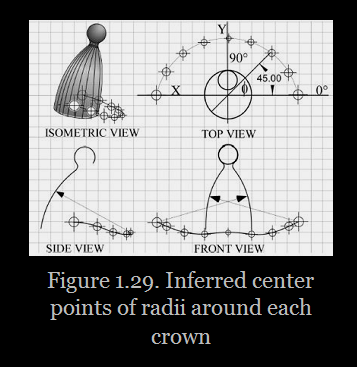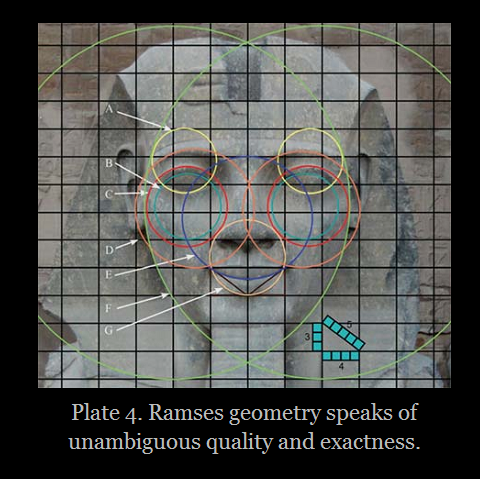It looks like you're using an Ad Blocker.
Please white-list or disable AboveTopSecret.com in your ad-blocking tool.
Thank you.
Some features of ATS will be disabled while you continue to use an ad-blocker.
share:
that clock they done did remade in lego is good toos. I like calculators too but calculators within calculators is too much for my brain meats.
Them pyramids must be like some of the cogs or something, i need a scratch, i just don't knows where they gots the lego back then, did the ancients leaves us a time machine?
Them pyramids must be like some of the cogs or something, i need a scratch, i just don't knows where they gots the lego back then, did the ancients leaves us a time machine?
edit on 25-11-2012 by usernamehere because: sky-net made me do it
Originally posted by Hanslune
The most accurately built ancient building known is the Parthenon, look too at the Laocoon - how could that have been made without modern technology- in marble
My favorite! But wait, the snakes in this sculpture are a hint at the advanced genetic engineering capabilities, which existed a long time ago but now have been hidden by TPTB! It's an insult to my intelligence! We know from the documents that the snakes were remotely controlled!
This is the registered Professional Engineer who wrote the first Foreword that I talked about in the OP:


Originally posted by buddhasystem
Originally posted by Hanslune
The most accurately built ancient building known is the Parthenon, look too at the Laocoon - how could that have been made without modern technology- in marble
My favorite! But wait, the snakes in this sculpture are a hint at the advanced genetic engineering capabilities, which existed a long time ago but now have been hidden by TPTB! It's an insult to my intelligence! We know from the documents that the snakes were remotely controlled!
The evil powers that be are partically evil when dealing with art, especially art from the later part of the first centry BC, of course the Greek artistic trio who made this had iron tools
reply to post by westo
Absolutely excellent! Thank you so much for posting this. (I've paused it at the point where the subject is Easter Island. I will watch the whole thing.)
Anyone who doubts what I said about the official story being an insult to our intelligence should watch this video.
Absolutely excellent! Thank you so much for posting this. (I've paused it at the point where the subject is Easter Island. I will watch the whole thing.)
Anyone who doubts what I said about the official story being an insult to our intelligence should watch this video.
reply to post by Mary Rose
its my opinion most people who divuge in such matters are classed as loons so it my personal thoughts.
its my opinion most people who divuge in such matters are classed as loons so it my personal thoughts.
reply to post by Hanslune
Honestly?
What I find odd is that although I do not agree with his analogy and hypothesis I find it interesting that he has exposed some very interesting questions. From everything I've read I have yet read how "Egyptology" has thoroughly explained how many of the things he discusses were accomplished nor have they presented the tools used other than to say bronze aged tools and stone balls etc etc etc
Again, I'm not saying he is right but I'd like to see academia's explanation on how some of these achievements were accomplished and show the tools and techniques used.
If they made their argument a bit more acceptable and believable using something other than their canned responses or simply apposing alternative theories it would go a long way in educating the masses.
Honestly?
What I find odd is that although I do not agree with his analogy and hypothesis I find it interesting that he has exposed some very interesting questions. From everything I've read I have yet read how "Egyptology" has thoroughly explained how many of the things he discusses were accomplished nor have they presented the tools used other than to say bronze aged tools and stone balls etc etc etc
Again, I'm not saying he is right but I'd like to see academia's explanation on how some of these achievements were accomplished and show the tools and techniques used.
If they made their argument a bit more acceptable and believable using something other than their canned responses or simply apposing alternative theories it would go a long way in educating the masses.
edit on 25-11-2012 by SLAYER69 because: (no reason given)
Originally posted by SLAYER69
reply to post by Hanslune
Honestly?
What I find odd is that although I do not agree with his analogy and hypothesis I find it interesting that he has exposed some very interesting questions. From everything I've read I have yet read how "Egyptology" has thoroughly explained how many of the things he discusses were accomplished nor have they presented the tools used other than to say bronze aged tools and stone balls etc etc etc
Howdy Slayer
Yeah honestly
Egyptology has looked at the problem and presented what they know about. Explain what 'thoroughly means', if that means they know exactly how it was done, no they don't, nor does any alternative or fringe theorist either, but one does have some facts to work with which come to us from inscriptions, archaeological excavations and documents
If they made their argument a bit more acceptable and believable using something other than their canned responses
Unless they make stuff up they cannot do what you want, the points of facts are there you then have to come up with a scenario that is possible, plausible and probably using ALL known facts, if you do that you get the AE doing it with the tools they had and a great deal of skill. If you want to show they had 'advanced machining' you need to provide evidence of the machine not the desire to have them exist.
or simply apposing alternative theories it would go a long way in educating the masses.
Give an example of how this would be done? The tools we have and the images we have don't show 'advanced machining'
Egyptologists are always hampered by what evidence they have, they can speculate but they cannot state with confidence that X was made by Y in the year Z by using a W tool in the manner Q. They can say that a person unknown in circa year probably made this using these tools and perhaps this method
Alternatives and fringe can always complain that that is not enough but then they have less evidence to support their theory than what Egyptologist have
edit on 25/11/12 by Hanslune because: (no reason given)
Originally posted by Mary Rose
reply to post by westo
Absolutely excellent! Thank you so much for posting this. (I've paused it at the point where the subject is Easter Island. I will watch the whole thing.)
Anyone who doubts what I said about the official story being an insult to our intelligence should watch this video.
There is no 'official story' that is your first mistake to think that - if there is who is giving it out?
Science runs by consensus, not imaginary, 'official stories'
Could you perhaps list the points you find that 'insult your intelligence'?
Originally posted by SLAYER69
Again, I'm not saying he is right but I'd like to see academia's explanation on how some of these achievements were accomplished and show the tools and techniques used.
I've seen parts of the video linked here, and there is too much hand waving to my taste. Like he ran his hand, and the surface was perfect and smooth. And quite symmetric.
I tell you what: my grandfather was a really good craftsman. One of the things he made, among others, was furniture. With carvings and all. Many times I would run my hand across the surface, and it was always perfect and smooth. And quite symmetric. And I know firsthand that he was using simple hand tools to do it all.
By the way the wooden toys like trucks and all that came out of his workshop did look as they were done at a factory. Geometrically perfect. No, there was no extraterrestrial intervention, I guarantee you that. No power tools either. All done by hands. I was there.
And as the others are saying, the egyptologists may never be able to give you the precise description of how things were done back then. It's not an excuse to invent stuff. By the way, nobody knows how the ancient Spartans fought in battle, or even how precisely they held their spears. It's all speculation. Most people still won't surmise that they fought with automatic weapons or ray guns, all of which mysteriously disappeared. Now draw a parallel with what's proposed in the original post.
reply to post by buddhasystem
One of my teachers made an observation once, what you get in history and archaeology are the barest of bare bones the rest is flesh made of shadows
Every once in awhile you get a bright point of clarity - like Otzi and even he has shadow about him. We may in the future find an master artisan's tomb with lovely inscriptions of exactly how he did what with what and perhaps even his tool kit will be there (I should point out we do have a limited number of such images), and even better a scribe wrote down his techniques.....but then I'm a hopeless romantic
One of my teachers made an observation once, what you get in history and archaeology are the barest of bare bones the rest is flesh made of shadows
Every once in awhile you get a bright point of clarity - like Otzi and even he has shadow about him. We may in the future find an master artisan's tomb with lovely inscriptions of exactly how he did what with what and perhaps even his tool kit will be there (I should point out we do have a limited number of such images), and even better a scribe wrote down his techniques.....but then I'm a hopeless romantic
edit on 25/11/12 by
Hanslune because: (no reason given)
Originally posted by Hanslune
Every once in awhile you get a bright point of clarity - like Otzi and even he has shadow about him.
Now, that's a fascinating subject! I've been to Egypt and saw much of what's presented here myself, but Otzi... That's really something.
Originally posted by Mary Rose
From the section “The Secrets of the Crown”:
. . .The ancient Egyptians were known to use grids in their designs.5 This indicates that they would have used what we know as Cartesian geometry, though undoubtedly they would have called it something different. Nonetheless, being in the same world as us, we can be assured that they were working in three-dimensional space and had identified the orthogonal axes of orientation that we know as x-y-z. They probably also had developed the concept of pitch and yaw, the rotational axes that are associated with navigation within three-dimensional space. For these constructs, too, the ancient Egyptians would more than likely have had their own labels.
When fixing a Cartesian view to a crown that approximates the crown’s orientation on the Ramses head, we see that its contours are not simple lathed shapes, but instead, they change continuously by degrees while conforming to a shape that, when measured at any angle around the object, is a true radius or combination of blended radii that form an ellipsoid. The sweeping curved surface was not the result of a random burst of artistic whimsy and a flourish with the chisel. It was a decidedly disciplined, orderly application of a design with tools that have not yet been found in the archaeological record, but which were built to achieve the precise removal of material.
The design and precise geometry that was crafted into Ramses’ crown is a symbol of a society that was disciplined in precision engineering and craft. The pieces could not have been created without the aid of some kind of mechanical device that guided the tool along a prescribed contour. Neither was this mechanical device a simple machine. Figures 1.29 and 1.30 illustrate a path of the center point of an arc extrapolated from the geometry of the crown. If the designers were to convey to the engineers or craftsmen what they wanted, drawings similar to figure 1.29 and figure 1.30 may have been used. The design is one thing, but devising from the drawing a means of cutting the design into granite—with the exactitude noted in the photographs and transmitted through the palms of my hands to my brain as I felt each surface—is entirely another matter. Creating such an object today using modern computers, software, and computer numerical controlled (CNC) machines would present some significant challenges, to be sure—but not as much head scratching would be involved today as there would have been forty-nine years ago, when I first entered the manufacturing trade as a young apprentice. Applying the tools of fifty years ago to the Ramses challenge would severely tax craftsmen skilled in manufacturing, and the tools and instruments necessary to ensure such precise geometry would not even be in a sculptor’s toolbox.
reply to post by Mary Rose
I guess this guy has never heard of a wooden guide, precut you move it around and chip off anything that makes it not fit - very, very high tech....what do you you think the great sculptures of the 14-19th century used? He really should have gotten some advice from a modern stone carver......
I suspect this guy has spent to much time in human resources
This is how you do it, you carve in wood what you want- once you have exactly what you want, you then make a piece of wood that corresponds to the line/curve of what you want. You then roughly carve the stone then apply the guide - hard work and it would require a master craftsmen - but guess what the AE had those - what they didn't have was computer aided machine tools....LOL
I guess this guy has never heard of a wooden guide, precut you move it around and chip off anything that makes it not fit - very, very high tech....what do you you think the great sculptures of the 14-19th century used? He really should have gotten some advice from a modern stone carver......
I suspect this guy has spent to much time in human resources
This is how you do it, you carve in wood what you want- once you have exactly what you want, you then make a piece of wood that corresponds to the line/curve of what you want. You then roughly carve the stone then apply the guide - hard work and it would require a master craftsmen - but guess what the AE had those - what they didn't have was computer aided machine tools....LOL
edit on 26/11/12 by Hanslune because: (no reason
given)
Question: How and why would the ancient Egyptians misrepresented how they carved stone?
They seem to think they used stones to bash out granite and bronze chisels to work limestone --------
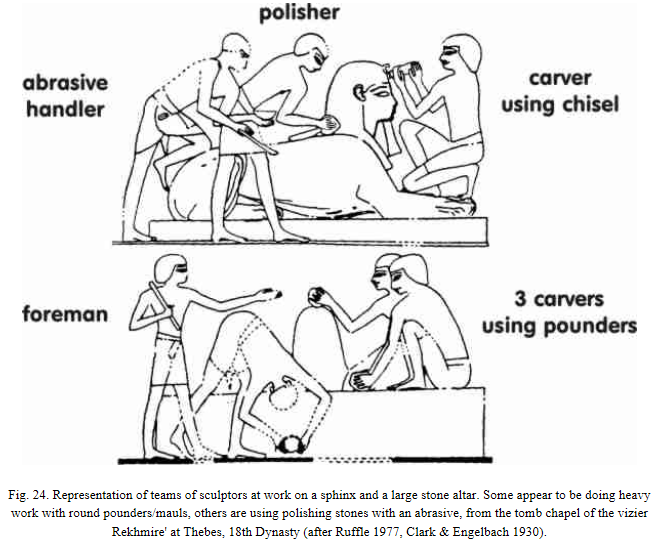
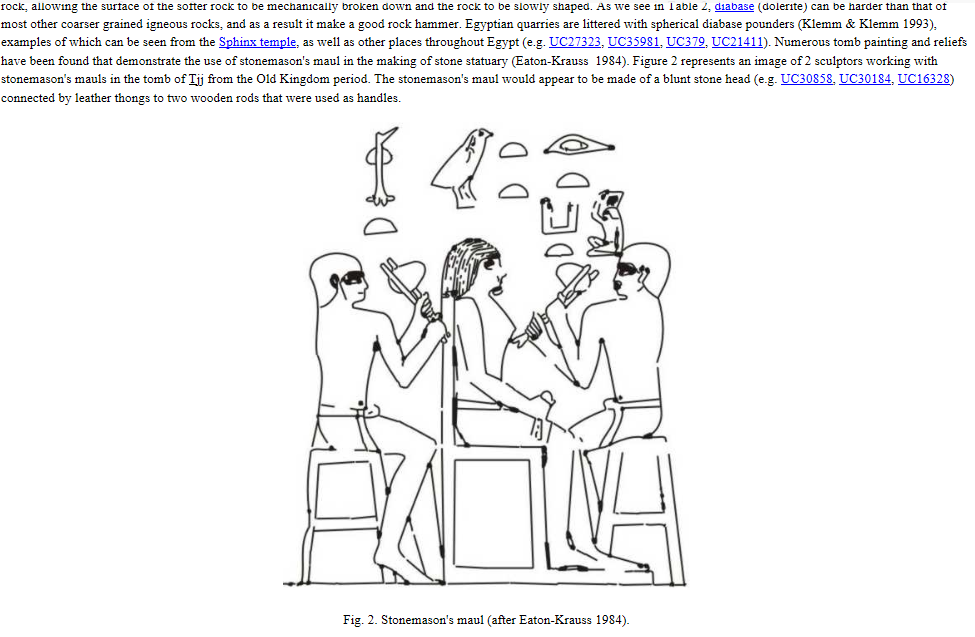
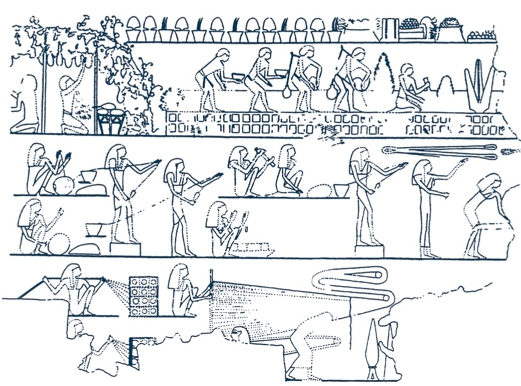
Why would they show people using crude tools when old Dunn seems to think they are so unskilled that they needed advanced machining?
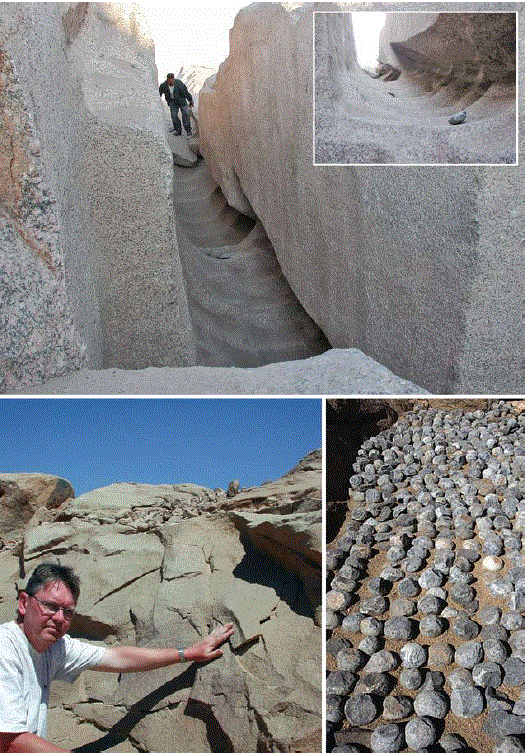
The last pictures are of the working level for the unfinished obelisk, note the dished out stone - how was that done? Bashed out using diorite - a number of them showin' up in the foto at the lower right - again if they had 'advanced machining' why were they bashing out granite obelisks using stones?
Link to study on ancient Egyptian quarries from which the picture above came
One has to wonder
They seem to think they used stones to bash out granite and bronze chisels to work limestone --------



Why would they show people using crude tools when old Dunn seems to think they are so unskilled that they needed advanced machining?

The last pictures are of the working level for the unfinished obelisk, note the dished out stone - how was that done? Bashed out using diorite - a number of them showin' up in the foto at the lower right - again if they had 'advanced machining' why were they bashing out granite obelisks using stones?
Link to study on ancient Egyptian quarries from which the picture above came
One has to wonder
edit on 26/11/12 by Hanslune because: (no reason given)
I'm fortunate enough to have visited both locations in Egypt and Angkor Wat in Cambodia.
Link
Funny that no one insists there was some kind of extra-terrestrial or other such advanced technology used in the construction of Angkor Wat. All they had was lots of manpower and hand tools. They just knew how to work it. I'll quote it again,
Link
The stones, as smooth as polished marble, were laid without mortar with very tight joints that were sometimes hard to find. The blocks were held together by mortise and tenon joints in some cases, while in others they used dovetails and gravity. The blocks were presumably put in place by a combination of elephants, coir ropes, pulleys and bamboo scaffolding. Henri Mouhot noted that most of the blocks had holes 2.5 cm in diameter and 3 cm deep, with more holes on the larger blocks. Some scholars have suggested that these were used to join them together with iron rods, but others claim they were used to hold temporary pegs to help manoeuvre them into place.
The monument was made out of enormous amounts of sandstone, as much as Khafre's pyramid in Egypt (over 5 million tons). This sandstone had to be transported from Mount Kulen, a quarry approximately 25 miles (40 km) to the northeast. The stone was presumably transported by raft along the Siem Reap river. This would have to have been done with care to avoid overturning the rafts with such a large amount of weight. One modern engineer estimated it would take 300 years to complete Angkor Wat today.[42] Yet the monument was begun soon after Suryavarman came to the throne and was finished shortly after his death, no more than 40 years.
Funny that no one insists there was some kind of extra-terrestrial or other such advanced technology used in the construction of Angkor Wat. All they had was lots of manpower and hand tools. They just knew how to work it. I'll quote it again,
The stones, as smooth as polished marble, were laid without mortar with very tight joints that were sometimes hard to find.
Originally posted by Mary Rose
From the section “The Secrets of the Crown”:
Originally posted by westo
I am delighted to see on YouTube that this video, which was uploaded April 2012, has had over 1.5 million views and over 4,000 comments so far.
I am very curious about the book that it is based on Revelation des Pyramides by Jacques Grimault. Amazon shows it as currently unavailable. Here is the Amazon "Product details":
Paperback
Publisher: Editions Carnot (6 Sep 2006)
Language: French
ISBN-10: 2848551283
ISBN-13: 978-2848551289
Who has experience locating "currently unavailable" books? Or does anyone know anything about this book or its author?
Originally posted by Mary Rose
I am very curious about the book that it is based on Revelation des Pyramides by Jacques Grimault.
I just used the URL of the page of the Comments section of the video to do a search on "Jacques Grimault" and it brought up 5 pages of results. I'll see what I can glean there.
Who on ATS speaks French and is interested in listening to an interview of Jacques Grimault with the intent of posting about it for us?
Evidently this website has posted an interview that took place November 20, 2012: "LA RÉVÉLATION DES PYRAMIDES : Interview de Jacques Grimault et Patrice Pooyard."
(Scroll down, click on the graphic, then click on "Voir la Vidéo.")
Evidently this website has posted an interview that took place November 20, 2012: "LA RÉVÉLATION DES PYRAMIDES : Interview de Jacques Grimault et Patrice Pooyard."
(Scroll down, click on the graphic, then click on "Voir la Vidéo.")
edit on 11/26/12 by Mary Rose because: Punctuation
new topics
-
Nvm
General Chit Chat: 1 hours ago -
OK this is sad but very strange stuff
Paranormal Studies: 7 hours ago -
Islam And A Book Of Lies
Religion, Faith, And Theology: 8 hours ago -
Sorry to disappoint you but...
US Political Madness: 10 hours ago
top topics
-
Sorry to disappoint you but...
US Political Madness: 10 hours ago, 13 flags -
Watch as a 12 million years old Crab Emerges from a Rock
Ancient & Lost Civilizations: 15 hours ago, 10 flags -
OK this is sad but very strange stuff
Paranormal Studies: 7 hours ago, 6 flags -
Islam And A Book Of Lies
Religion, Faith, And Theology: 8 hours ago, 5 flags -
Nvm
General Chit Chat: 1 hours ago, 1 flags
active topics
-
Volcano Watch 2025
Fragile Earth • 7 • : Cracka -
Meta Llama local AI system is scary good
Science & Technology • 40 • : glend -
The Acronym Game .. Pt.4
General Chit Chat • 1035 • : bally001 -
Joe Biden gives the USA's Highest Civilian Honor Award to Hillary Clinton and George Soros.
US Political Madness • 49 • : ADVISOR -
Nvm
General Chit Chat • 1 • : Mantiss2021 -
Post A Funny (T&C Friendly) Pic Part IV: The LOL awakens!
General Chit Chat • 7993 • : Cymru -
ILLUMINATION: Dimensions / Degrees – Da Vincis Last Supper And The Philosophers Stone
Secret Societies • 6 • : Compendium -
Sorry to disappoint you but...
US Political Madness • 15 • : Flyingclaydisk -
Musk calls on King Charles III to dissolve Parliament over Oldham sex grooming gangs
Mainstream News • 180 • : Freeborn -
Islam And A Book Of Lies
Religion, Faith, And Theology • 3 • : nugget1

